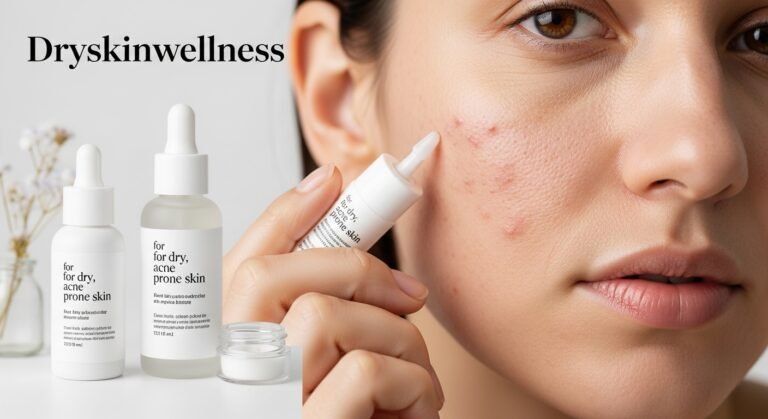Explore How To Know If You Have Oily Or Dry Skin
Have you ever wondered why some skincare products work wonders for your friend but leave your skin greasy or tight? The answer lies in understanding your skin type. Determining how to know if you have oily or dry skin is the first step toward developing a personalized skincare routine that addresses your needs.
In this comprehensive guide, we will delve into the world of skincare and explore how to identify whether you have oily or dry skin. By the end, you’ll be armed with the knowledge to make informed decisions about the products and techniques that best suit your skin.
Understanding Your Skin: The Basics
Before identifying specific skin types, let’s start understanding how our skin functions. Our skin comprises multiple layers, each crucial to maintaining health and appearance.
The outermost layer called the epidermis, acts as a protective barrier against external aggressors such as pollution and UV rays. Beneath the epidermis lies the dermis, which contains collagen, elastin fibers, blood vessels, hair follicles, and oil glands known as sebaceous glands.
Sebaceous glands produce sebum—a natural oil that helps moisturize and protect our skin. The amount of sebum produced varies from person to person and determines their skin type—whether it’s oily, dry, combination, or average.
Signs of Oily Skin
Oily skin is characterized by overactive sebaceous glands that produce excess sebum. If you have oily skin, you may notice the following signs:
Excess Shine
One telltale sign of oily skin type is persistent shine on your face even shortly after cleansing it. This shine tends to be most noticeable in the T-zone area—the forehead, nose, and chin—although it can extend to other face parts.
Enlarged Pores
Oily skin often goes hand in hand with visibly enlarged pores. These pores are more prominent, especially in the T-zone above area. The excess sebum produced can clog these pores, leading to blackheads and acne breakouts.
Prone to Acne
Due to the increased sebum production, oily skin is more prone to developing acne. The excess oil combines with dead skin cells and bacteria, clogging the pores and resulting in pimples, whiteheads, and blackheads.
Signs of Dry Skin
On the other end of the spectrum lies dry skin, characterized by insufficient sebum production. If you have dry skin, you may experience the following signs:
Tightness and Discomfort
Dry skin often feels tight and uncomfortable after cleansing or exposure to harsh weather conditions. It may even become itchy or flaky due to a lack of moisture.
Dull Appearance
Dry skin tends to lack radiance and may appear dull or rough. Insufficient sebum leads to an impaired moisture barrier function, causing water loss from the skin’s surface.
Fine Lines and Wrinkles
Fine lines and wrinkles can become more visible on dry skin without adequate moisture. The lack of hydration can exacerbate the appearance of these signs of aging.
Now that we’ve explored some common signs associated with oily and dry skin type let’s understand how to determine your specific skin type to tailor your skincare routine accordingly.
Remember, a consistent and personalized routine is vital to maintaining healthy and radiant-looking skin regardless of skin type. So embrace your unique skin type and give it the love and care it deserves. So, experiment with different products and techniques until you find what works best for you. Here’s to happy and healthy skin! Happy exploring!
FAQ
Q: Can I have both oily and dry skin?
A: Yes, you can have oily and dry skin. This is known as combination skin, where certain areas of your face may be oily while others are dry.
Q: How do hormones affect the production of sebum?
A: Hormonal changes during puberty, pregnancy, and menopause can lead to an increase in sebum production, resulting in oily skin. On the other hand, hormonal imbalances can also cause a decrease in sebum production and lead to dry skin.
Q: Can my skin type change over time?
A: Yes, your skin type can fluctuate depending on various factors such as age, hormones, lifestyle changes, and external influences. It’s important to regularly reassess your skin type and adjust your skincare routine accordingly. So be sure to listen to your skin and adapt as needed.
Q: Are there any specific ingredients I should look for in oily or dry skin products?
A: Yes, certain ingredients can benefit oily or dry skin types. Look for oil-absorbing ingredients like salicylic acid and clay for oily skin, while hyaluronic acid and glycerin can help hydrate dry skin.
However, it’s best to consult a dermatologist for personalized recommendations based on your skin type. So don’t be afraid to seek professional advice! Remember, knowledge is power when it comes to caring for your skin. Happy exploring!
Final Thought
In conclusion, understanding your skin type is crucial to achieving healthy and radiant skin. Whether you have oily or dry skin, listening to your skin and tailoring your skincare routine is essential.
By identifying the signs of each skin type and familiarizing yourself with the basics of how our skin functions, you can make informed decisions about the products and techniques that will best suit your unique skin.
So experiment with different products and methods, always keeping in mind the specific needs of your skin type. And don’t be afraid to seek professional advice from a dermatologist for personalized recommendations. With a consistent and customized skincare routine, you can embrace your unique skin type and give it the love and care it deserves

